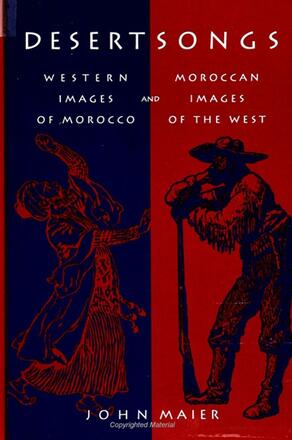
Desert Songs
Western Images of Morocco and Moroccan Images of the West
Alternative formats available from:
Examines American and Middle Eastern texts in studies of Orientalism and Occidentalism, and argues for a new approach to cultural studies that incorporates a wider variety of materials.
Description
In an unusual approach to cultural studies, John Maier examines a wide variety of modern Western and Eastern texts. He brings together very different forms of cultural production: modern and postmodern fiction and folktales, advertising copy and oral histories, travel literature, and ethnographic studies. Many academic disciplines are also juxtaposed—literature and literary theory, linguistics, history, psychoanalysis, sociology, film studies, women's studies, and anthropology—largely because they have themselves been transformed by the cultural questions raised here.
John Maier is Professor of English at State University of New York College at Brockport. He is the co-author, with John Gardner, of Gilgamesh, Translated from the version of Sin-leqi-unninni, and co-author, with Samuel Noah Kramer, of Myths of Enki, The Crafty God; and co-editor of The Bible in Its Literary Milieu: Contemporary Essays, and Mappings of the Biblical Terrain: The Bible as Text (both with Vincent L. Tollers).
Reviews
"The author's intercultural analysis is informed throughout by a sophisticated theoretical perspective and a sensitivity to the pitfalls of ideological hypercorrectness and naive ethnocentrism. The subject of his study is somewhat loose—'images' of Morocco and the West—but this looseness is what I find especially admirable in this book, since it arises from a respect for the complexities and incommensurabilities of intercultural comparison. This is a subtle examination that eschews doctrinaire answers to difficult questions. Said's Orientalism provides Maier with a basic orientation toward asymmetrical cultural relations and feminist studies of women in Islam help guide his reflections on the troubling issue of gender in non-Western, traditional societies. The recognition of such complexities not only strengthens the argument of the work but also ensures that the analyses are complex and multi-faceted.
"The reflections on travel literature, ethnography, gender inequities, historiography, cinematography, and dialect especially reveal a thorough and careful concern for the difficult theoretical issues that arise as the author traverses various disciplines and fields. This is no programmatic processing of multiple materials through the machine of a single idea, but a reflective and learned examination of a number of key questions in diverse areas that converge in the images that two cultures have created to represent one another." — Ronald Bogue, University of Georgia